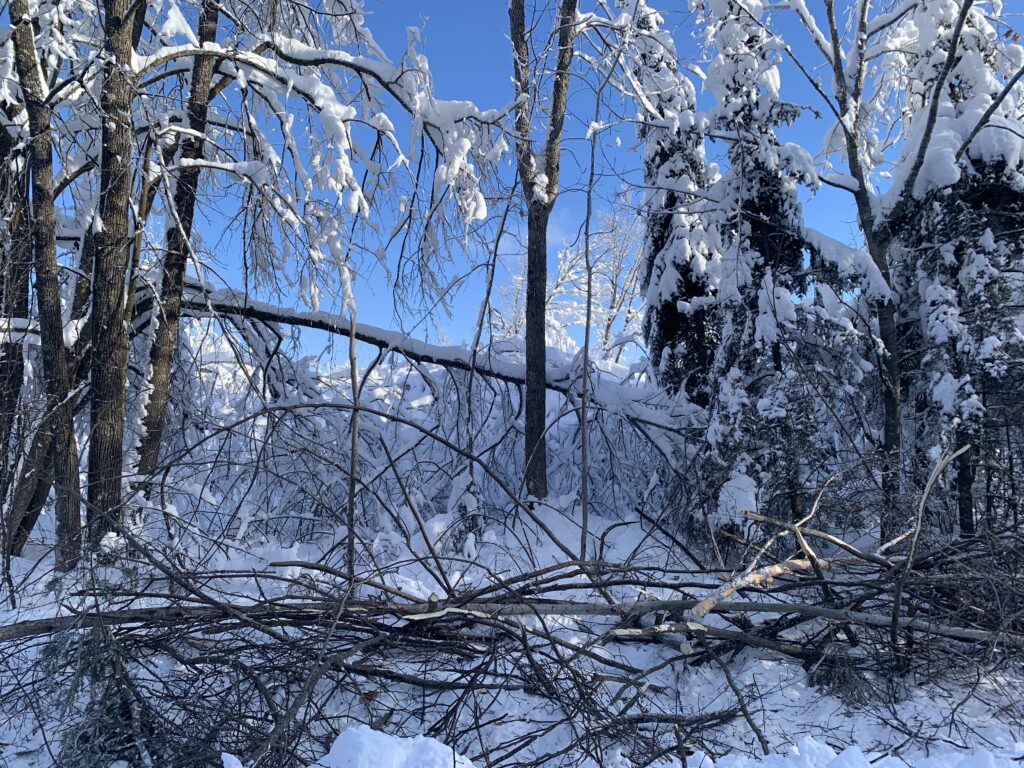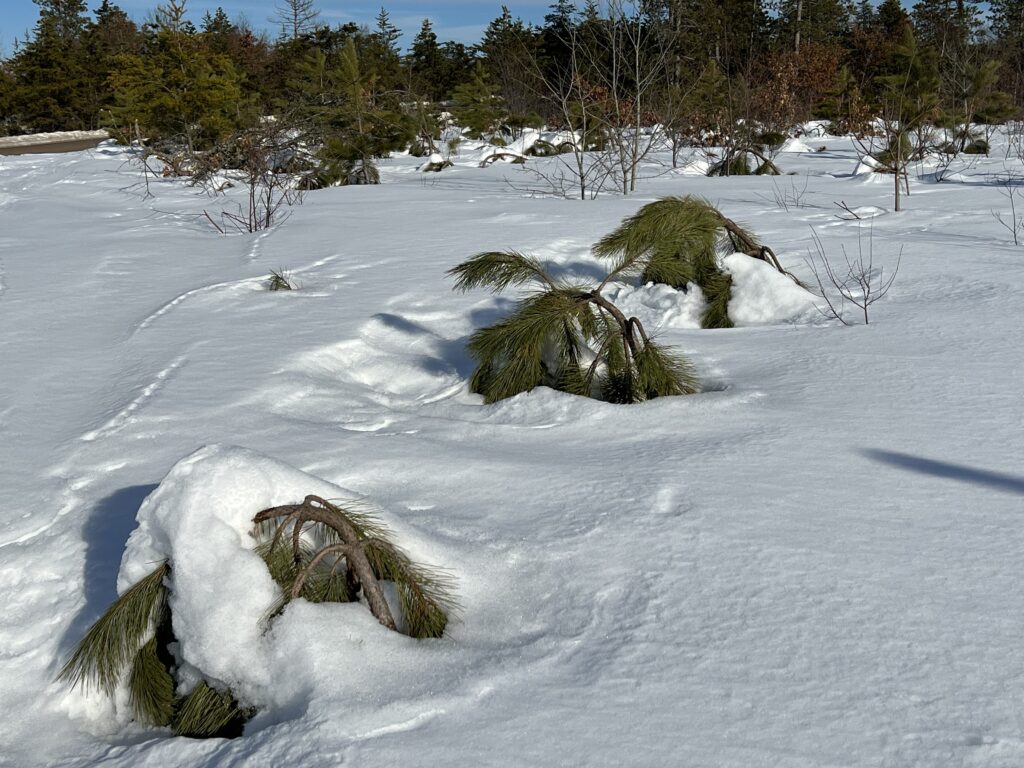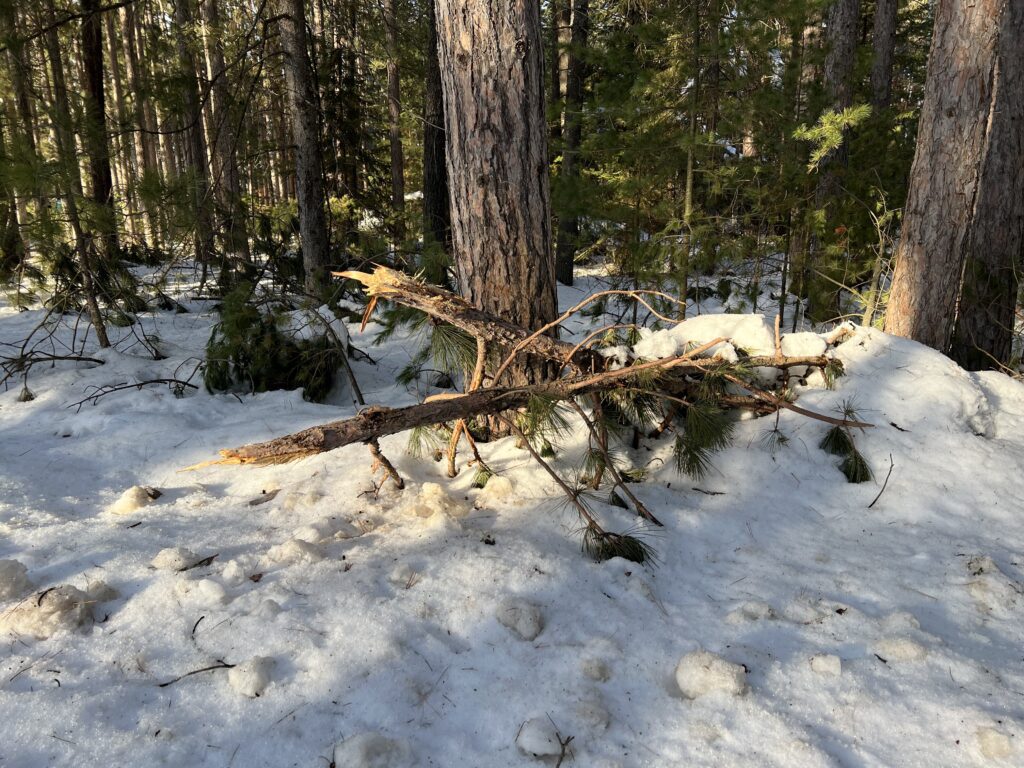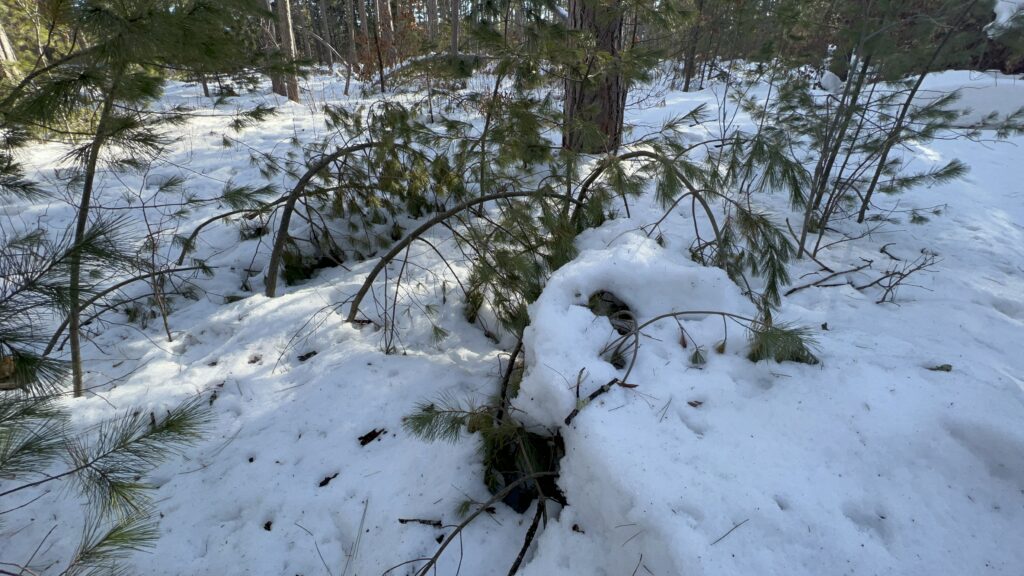Thousands of acres damaged by snow
The December blizzard that brought wet, heavy snow throughout the Northland has affected thousands of acres of trees in Pine and Carlton Counties.
“We initially got that freezing rain on the front end, and it stuck to the trees,” said Carlton County Forester Mark Westphal. “Then we got the wind and the heavy snow, and it was like glue. It just toppled them over and cemented everything. That’s why we get this rolling effect out here.”


The trees that were affected the most were young aspen due to the flexibility to be bent by the heavy snow load. Young pine trees were also bent over, and older pine lost branches or snapped. The damage varies acre by acre.
“I think across Carlton County, if I had a rough guess, I’d say probably about a thousand acres were impacted in various spots,” said Carlton County Land Commissioner Greg Bernu. “It hopped and skipped across our county, whereas down on Pine County, probably more of a solid blanket than anything.
Minnesota DNR Assistant Area Forestry Supervisor Chris Henkel agrees with Bernu’s estimate.
“In Pine County alone, we have over 240,000 acres of state forest land,” said Henkel. “We’re estimating somewhere in that, 10-20 percent is damaged. Within those 10-20 percent of acres, the damage ranges from a few trees bent over to upwards of 50 percent damage.”

The full extent of the damage will not be known until the snow melts.
“In the spring, we’ll have to get out and assess just how many acres are damaged and the extent to which some of it might come back from the damage and actually spring back up,” said Minnesota Forest Industries Executive Vice President Rick Hortion. “The damaged forests will have to be recycled. Essentially, we’ll have to use heavy equipment to shear it off or chop it off and allow the stand to either come back or be replanted.”
Many of the damaged trees were planted for future harvest.
“With the young trees, there is a lot of concern that their value that was hoping to be there in the future is not going to be there,” said Henkel. “That’s part of the process now- waiting and seeing what things look like when they are snow free. Obviously, stuff that is broken or bent, the value is not there as if it was a straight, healthy tree.”
Forestry operates on timelines based on the life of a tree.
“We do long term planning depending on that resource to be available some time in the future,” said Horton. “This has a potential to really cut into fiber supplies, say, 30 years from now when these trees would be mature and ready to be managed. And so hopefully we can make up for it elsewhere. But this event is so large, it’s the equivalent of a big blowdown event. We’re going to have an unplanned death of a lot of trees.”
Although there will likely be a negative impact on the logging industry in the affected area, there may be an advantage for the ecosystem.
“Weather events like this increase our diversity by giving different species opportunities to seed in places where other trees break off. It just makes our forest more resilient and makes better homes for different kinds of wildlife,” said Westphal. “Overall, the forest has been handling itself up here for 12,000 years, and this is just another little blip in that process.”




The effect on wildlife is uncertain at this time, with varying opinions.
“This is somewhere around 10-20 acres, potentially, of ideal habitat for rough grouse, woodcock, golden wing, warbler, and deer,” said Horton. “Having lost it, it’ll go back to being very young forest. Still good for those species, but it was at that ideal age for a lot of things.”
Bernu believes the bent trees will result in a boon for wildlife.
“All the building block stuff, they’re down below this stuff. The mice, the rabbits, the voles, probably even grouse. They’re back hunkered down under this stuff, right under in cold temperature,” said Bernu. “There’s no way a predator, an airborne predator is going to get at them. A fox, wolves, coyotes, they’re going to have a heck of a time crawling into the stuff to get after that. So I think small game are going to do really well in the next couple of years because of this. They’ve got good hedges to hide in.”
Warmer weather in recent weeks may help some trees, but most could struggle to spring back.
“We’re getting the nice weather, and it’s helping to release some of that snow,” said Henkel. But what’s done is done. Anything that’s severely bent is going to stay bent.”
Once the assessments are done, the Minnesota DNR and forest industries will be able to get to work fixing what Mother Nature damaged.
“That’s the same thing as if we were to have a wind storm, a bug event, you know, with insects, killing trees, a fire event, anything like that,” said Horton. We have to intervene and fix it, salvage the wood as best we can and start over, plant new trees and continue on.”
